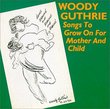| All Artists: John Adams, Kent Nagano, London Symphony Orchestra, Orchestra of St. Luke's, Gidon Kremer Title: Adams: Violin Concerto/Shaker Loops Members Wishing: 1 Total Copies: 0 Label: Nonesuch Release Date: 4/9/1996 Genres: Dance & Electronic, Jazz, Classical Styles: Techno, Chamber Music, Forms & Genres, Concertos Number of Discs: 1 SwapaCD Credits: 1 UPC: 075597936025 |
Search - John Adams, Kent Nagano, London Symphony Orchestra :: Adams: Violin Concerto/Shaker Loops
 | John Adams, Kent Nagano, London Symphony Orchestra Adams: Violin Concerto/Shaker Loops Genres: Dance & Electronic, Jazz, Classical
Turned loose on John Adams's surprisingly flexible violin concerto, the team of conductor Kent Nagano and soloist Gidon Kremer do justice to its passionate verve. Nagano leads the London Symphony Orchestra to the point of ... more » |
Larger Image |
CD DetailsSynopsis
Amazon.com essential recording Turned loose on John Adams's surprisingly flexible violin concerto, the team of conductor Kent Nagano and soloist Gidon Kremer do justice to its passionate verve. Nagano leads the London Symphony Orchestra to the point of near-explosion as it approaches Kremer's sluicing take on the work. Kremer hits the right slipping scales and sometimes slashing skids like magic, with the orchestra seeping into the sound and leaping forward for Kremer to chase. The sound is effusively rich and far distant from Adams's more pronounced studies in repetition and harmonic expansion. The rendition of Shaker Loops here dates from 1983, that is, it's in the hands of the Orchestra of St. Luke's rather than performed by string septet, for which it was premiered in 1978. While some prefer the economy of the smaller-ensemble recordings (particularly the Ensemble Modern's version), this Adams-conducted version has the force of a lurching train. It's dense and overflowing, repeatedly surprising the listener with its Trojan horse-like discovery of small innovations beneath the large-group expansiveness. --Andrew Bartlett Similarly Requested CDs
|
CD ReviewsGreat new music G. Faville | Wisconsin | 05/02/2000 (5 out of 5 stars) "If you're checking out this site you are probably already familiar with Adam's music. I was first introduced to Adams with A Short Ride in a Fast Machine, which I had the good fortune to perform in an orchestra. I then bought Fearful Symmetries (primarily because of the cool title) and loved that as well, being a fan already of minimalism through Glass, Reich, and Riley. Adams has really taken his music in directions far away from all of those composers. The violin concerto on this disc is not altogether solid, in my opinion. The first movement does little for me. Adams lays down a beautiful blanket of sound with the orchestra and writes what seems like improvisatory thoughts in the violin part over the top of it. It takes repeated listens to start hearing and recognizing the motifs and appreciating the overarching structure to the movement. The movement just doesn't speak to me. The second movement, on the other hand, is an absolutely beautiful chaconne that to me carries a lot of melancholy and nostalgia on the violin line, but you will hear what you want to. The price of the CD is worth it for this movement alone. The Toccare is a real showpiece, perpetual motion style driving rhythm, that must be a real finger buster. Shaker Loops is more of the real minimalist piece here, and it was composed about 10 to 15 years earlier than the concerto. I love listening to it. It works the best as background music, in my opinion, unless you are going to see it live. Tune in once in a while and you'll hear some really clever harmonic turns underneath all the texture. One of the things that I love about minimalistic music is also how you can get lost in thought listening to the patterns, then suddenly realize everything is completely different in the music and you wonder how it got that way without you noticing it." Two of minimalism's finest works ragamala78 | USA | 10/15/2000 (5 out of 5 stars) "These two works by American composer John Adams, "Violin Concerto" (1993) and "Shaker Loops" (1977, revised 1983) are two of the finest minimalist works I've ever heard. Adams is one of the few minimalist composers that has evolved into something else. He hasn't limited himself strictly to that genre. The earlier of these two works "Shaker Loops" is the more traditionally minimalist of the two. Even then, it is still breaking away from strict minimalism. The pulsating repetiveness is still there, but there are more lyrical passages that release and provided a much needed rest from the intensity of the hard repetition. Scored for string orchestra, its often hard to imagine that only strings are making these sounds.The "Violin Concerto" concerto is easily the more mature of the two works. At this point in his career, Adams is definately "post-minimalist" (all these labels mean virtually nothing!) New music advocate Gidon Kremer is the perfect choice as soloist for this piercing, energetic and exciting work. It is a piece often brimming with energy. It is also important that such a major contemporary composer is going back and returning to a very popular and traditional form considering that most modern composers do whatever they see fit by either inventing new forms or abandoning form entirely. The violin almost never stops completely overpowering the orchestra's understated but excellent part. The third movement in particular is quite unlike most violin concertos. Very spiky and fun.A splendid pair of works by one of today's most famour composers. The violin concerto, especially is worth checking out." Quit calling it minimalism! G. Faville | 11/08/2001 (5 out of 5 stars) "I think if John Adams were to read some of the earlier reviews that referred to him as a minimalist and to these pieces as minimalist works, he would hunt down the reviewers at all costs. These pieces do show some influence of the minimalist period, but both pieces are such richly vested with luscious melodies and a strong sense of change that we'd be insane to label them as minimalist.Kremer, always a consummate musician, provides us with yet another gorgeous recording. Kent Nagano, the conductor, works well with kremer here - the LSO's attack on this piece perfectly parallels Kremer's slicing approach. The piece will swell to points where you'd think the speakers would burst from the intensity, and then drop back down to a quiet, almost sinister set of pizzicati lines.It's quite a rush. This piece is definitely in the running for one of the great violin concerti of the 20th century"
|

 Track Listings (7) - Disc #1
Track Listings (7) - Disc #1








